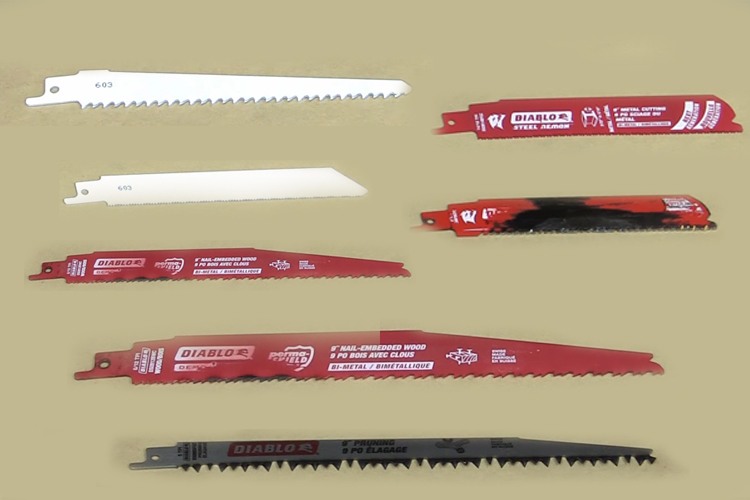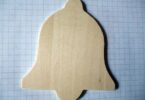Not many people – even some owners of the reciprocating saws – are fully aware of the different types of blades. But, the key component that makes the machine useful is its blade, which is why you should have a sound grasp of the blades, their lengths, designs, and other factors. Don’t worry because you need not memorize a long lesson. Just read my quick reciprocating saw blade guide and get what you need most.
Reciprocating Saw Blade Guide

Have you been out there looking for information about a reciprocating saw? Then this is where you need to be because we shall soon be examining a few things as it relates to the reciprocating saw blade. Promising to be very short and precise, all you need is to read through up until the end.
Different Types of Reciprocating Saw Blades
The reciprocating saw or sawzall blades come in various types. Over time, more types have been known to be more prominent than others while some of them have been named based on the shape they come or the material type. Of the many reciprocating saw blades, we have the diamond blades, carbon steel blades, carbide grit blade, and carbide steel blade.
1. Blade Materials
Blade materials differ from one saw to another. While some are made up of birth metal materials, others are made up of carbon steel, diamond, speed steel or carbide materials. Let us briefly examine the various material types of reciprocating saw blades
-
Bi-Metal
The bi-metal blade material type is a combination of high carbon steel material and high-speed steel material. This makes it one of the strongest material types of reciprocating saw blades can have as it offers both flexibility on one hand and strength and durability on the other. From usage, it is estimated that a bit metal reciprocating saw blade is ten times stronger than any other blade material type which makes it very versatile and costly.
-
Hcs or High Carbon Steel
The high carbon steel reciprocating saw blade material type is known to be very cheap and are quite more user-friendly than any other material type because of their softness. Also a flexible material in terms of being break resistance, but has been found wanting in terms of reliability. A lot of questions also surrounds the durability of this material type. Aside from that, they are the best option for cutting soft wood or plastic materials and functionless when used on hardwood or metal.
-
Hss or High-Speed Steel
The high-speed steel material is a material type that is known to have high resistance to heat and have been tested to be more durable and reliable than the high carbon steel material type. The hard nature of this material type does not make it as flexible as its counterparts, so it is likely to break if you bend it more than is required. The strength of this material type allows it to be able to work well on hardwoods and nonferrous metal as well.
-
Diamond
When you consider an abrasive reciprocating saw material, then it is best to find the diamond blades. This is why they are mostly used for cutting concrete, glass, ceramic, and iron. With its hardness and fineness, the material cuts fine soft material without damaging it. Not only do they last up to 20 times more than the tungsten carbide grit material, but they are also known to make faster cuts.
-
Carbide Grit
The carbide grit which is popularly known as the tungsten carbide is toothless blade types. Just like the diamond blades, they are abrasive, and thereby, suitable for dense materials lime ceramics, cement, brick, etc. The carbide grit material types are very hard making them cutting easily through hard pieces without necessarily causing any damage to them.
-
Carbide Tipped
Carbide tipped material types combine both the tungsten carbide and titanium carbide. This combination is what makes reciprocating saws made of this material type extremely strong. Asides strength, the carbide tipped material has high resistance to heat as well and can cut through thick metal pieces like cast iron and steel material types. Any metal material that cannot be cut with the other material types can be cut with the carbide tipped material.
2. Length of Blades
Generally, the length of every reciprocating saw blade falls within the range of 3 inches to 12 inches. Blades with 3″ – 6″ are known to be short blades which are more rigid and aggressive than other blades lengths. The rigidity of blades with shorter lengths allows for more precise straight and square cuts. Shorter blades are the best pick for cutting through copper pipes and thin metals. Longer blades, on the other hand, are known to be flexible with a larger surface area. They are the best blade length type for tasks that require demolition or dismantling.
3. Width and Thickness
The stability of a reciprocating saw blade is measured based on its width. Wider blades are known to have some resistance to vibrations which makes them more precise when used for cutting operations. The thickness of a standard reciprocating saw blade varies. For standard duty blades, it is about 0.035″. For medium heavy-duty, it is about 0.042″. For heavy duty, it ranges from about 0.050″ to 0.062″. It is important to note that the thicker the blade of the reciprocating saw, the more durable the saw is likely to be. When making use of the saw for demolition purposes, it is best to make use of a saw blade with a heavy duty thickness.
4. Tpi or Teeth per Inch
The standard teeth per inch of a reciprocating saw blade should fall between the range of 3 -24. The TPI of the blade determines the cut speed and smoothness of the cut. Blades with a low TPI can make faster cuts with a rough outcome while blades with higher TPI make slower cuts, but a combo may get you a better result. Thus, a reciprocating saw becomes a useful component for different projects.
5. Fitment of the Blades
This reciprocating saw blade guide will not be complete without talking about the fitment of the blades. Not every blade type fits in well into the saw, and as such, it is essential to take note of some factors. You have to consider the width, height, and size of the saw to be able to know which of the blade type will fit in best.
6. Dos and Don’ts
- Get familiar with the type of wood or material that needs to be cut. When you know if the wood is hardwood or softwood or it is a metal or plastic, you will know the best saw blade to go for.
- Do not go for a blade that will not correctly fit in well into the reciprocating saw to avoid it from falling off while in use.
- Do not go for a blade without having an idea about the project first. Knowing about the woodworking or metal working project informs your choice of blade and which is best for the project.
The wrong blade for the right saw may not produce good results. This is why it is essential for you to pay attention to all the blade factors provided in this reciprocating saw blade guide.







